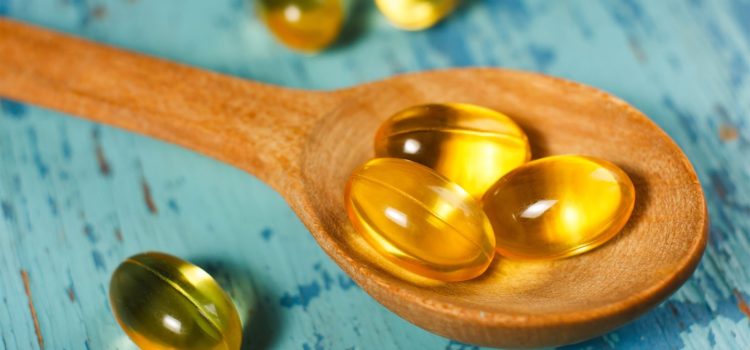


Would you believe that the majority of the population — up to 90 percent of adults in the U.S. — is believed to have a vitamin D deficiency?
Many physicians are starting to take this vitamin deficiency very seriously; in fact, vitamin D is one of the most recommended supplements by physicians today in order to treat and/or prevent vitamin D deficiency symptoms. Most adults are believed to be at least somewhat deficient in vitamin D, however, people with dark skin, people who live in northern regions of the world where less year-round sun exposure is experienced and those who are overweight have an even greater chance of experiencing vitamin D deficiency symptoms.
According to the National Health and Nutrition Examination Survey, the newest statistics demonstrate that more than 90 percent of people with darker skin pigments (including African-Americans, Hispanics and Asians) living in the United States now suffer from vitamin D insufficiency, while 75 perfect of the white population is deficient.
As the population of overweight and obese adults and children has risen steadily over the past several decades, so has the incidence of vitamin D deficiency symptoms. Sadly, vitamin D deficiency is correlated with increased risks of developing common cancers, autoimmune diseases, hypertension and various infectious diseases, too.
A 2017 study recently revealed that occupation can also play a big role in vitamin D levels. Researchers found that shift-workers, health care workers and indoor workers are at a high risk of developing vitamin D deficiency due to reduced outdoor time and sunlight exposure.
Luckily, there are ways you can naturally increase your vitamin D levels and decrease your risk of developing health conditions like heart disease, cancer, diabetes and other vitamin D deficiency symptoms. Spending time in the sun, without sunscreen, is your surest way to get enough vitamin D, and eating vitamin D-rich foods also helps improve your blood levels. Read on to understand just how much time you need in the sun and what foods will help you to avoid a vitamin D deficiency symptoms.
What Is Vitamin D?
Vitamin D is a fat-soluble vitamin that’s stored in the liver and fatty tissues. This means that increased body fat has the ability to absorb vitamin D and keep it from being used within our body. Vitamin D is somewhat different than other vitamins because our bodies make most of our vitamin D on their own, rather than solely relying on food sources. Because vitamin D is a fat-soluble vitamin, which means if you supplement, you’ll need to take your pill with a healthy fat, such as avocado slices.
The way our bodies make vitamin D is to convert sunshine into chemicals that are used by the body. In particular, when UV-B sunshine rays land on the skin, a substance in the skin called 7-dehydrocholesterol is literally converted into vitamin D3.
7-dehydrocholesterol or the cholesterol in our skin — and very similar to cholesterol itself — converts “previtamin D” and makes it into usable vitamin D3, which is sometimes also called provitamin D.
What Causes Vitamin D Deficiency Symptoms?
It’s worth repeating that 50 percent to 90 percent of most people’s vitamin D comes from casual sunlight exposure. Your skin makes vitamin D when it comes in contact with the ultraviolet B (UVB) rays from the sun. Therefore one of the biggest reasons that a growing population is experiencing vitamin D deficiency symptoms is because of our modern, primarily indoors lifestyle. This contributes to the two most common causes of vitamin D deficiency symptoms:
1. Lack of Sun
While years ago people spent more time outdoors, walking to do errands and even working outside, today we see a different situation. Most children spend unprecedented hours inside — watching television, playing video games and surfing the internet. Similarly, most adults work indoors, exercise inside gyms and spend their free time inside their homes where they are sheltered from the sun.
With all this time indoors, it’s no wonder we don’t get enough of the “sunshine vitamin” and vitamin D deficiency affects over a billion people worldwide. Traditionally, the human vitamin D system begins in the skin, not from the foods you eat. Although food sources of vitamin D can help raise your levels and prevent a deficiency, the sun is your most effective way to sustain proper vitamin D levels.
2. Sunscreens
Not only are we failing to get enough time outdoors in the sun, but when we do, many of us wear sunscreen nearly the entire time. As the risk for developing skin cancer has also risen in recent years, doctors strongly encourage the use of sunscreen for children and adults, even through the winter months and when sun exposure is generally limited.
Alarmingly, some research shows that when you wear sunblock SPF 8, you reduce your body’s ability to make vitamin D by 90 percent. If you choose a sunblock with a higher SPF of 30 (which is the number normally recommended by doctors), you reduce your body’s ability by up to 99 percent. This results in further deficiencies because even though we spend time outdoors, the sunscreen doesn’t allow our bodies to convert vitamin D from the sun. Research also shows that certain health conditions, such as abdominal obesity, type 2 diabetes, insulin resistance and hypertension, also increases a person’s risk of vitamin D deficiency.
Vitamin D Deficiency Symptoms
There is a great body of evidence that shows that people with vitamin D deficiency are at an increased risk of developing health complications and conditions like cardiovascular disease, metabolic syndrome, various types of cancer, immune disorders and adverse pregnancy outcomes. According to several scientific studies and reviews, a vitamin D deficiency symptoms can be linked to the following health problems:
• osteoporosis
• heart disease
• high blood pressure
• cancer
• autoimmune diseases
• depression
• insomnia
• arthritis
• diabetes
• asthma
• multiple sclerosis
• chronic pain
• psoriasis
• fibromyalgia
• autism
Researchers suggest that anyone with these health conditions or the following symptoms should be tested for vitamin D deficiency:
• weakness
• chronic fatigue
• depression
• trouble sleeping
• anxiety
• weak or broken bones
• weakened immune system
• inflammation and swelling
The only way to know if you are deficient in vitamin D is to have your doctor perform a test, called a 25-hydroxy vitamin D test. This will tell you if, and how severely, you are deficient. When your doctor performs a blood test and gives you the results for your vitamin D levels, keep these numbers in mind:
• 50+ equals a good level of vitamin D
• 30–50 means you want to supplement with vitamin D, work on spending more time in the sun and add vitamin D foods into your diet
• less than 30 means you are very deficient and definitely want to take immediate action to bring those levels up
Talk with your doctor about supplementing with higher doses of vitamin D if you are severely deficient or have a very low level according to the tests. When your doctor performs a vitamin D test, specify that you would like to have the 25-hydroxoyvitamin D test done, sometimes also called the 25(OH) D test.
Some other types of vitamin D tests can show normal or even elevated levels of vitamin D, which are actually inaccurate and can hide a serious deficiency, so the 25(OH) D test seems to be the most accurate when determining your true vitamin D levels.
How Much Vitamin D Should You Be Getting?
Adults need 600 international units (IU) of vitamin D each day (800 IU if you’re over age 70), which can be sourced through diet, sunlight, or supplements. Because very few foods have enough vitamin D to reach those levels, and sunshine can be unreliable in certain climates, many Americans turn to vitamin D supplements to get their fill.
Men and women relying on sourcing vitamin D through diet alone typically don’t exceed 288 IU a day on average.3 But when supplements are added, they get closer to the 600 IU goal. Consider this: Women between ages 51 and 70, who averaged 156 IU through the diet-only approach, reached 404 IU with the help of supplements.











No comments so far.
Be first to leave comment below.